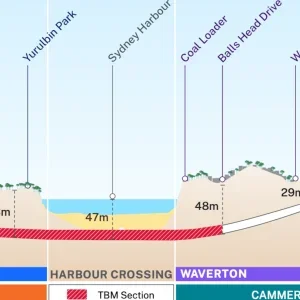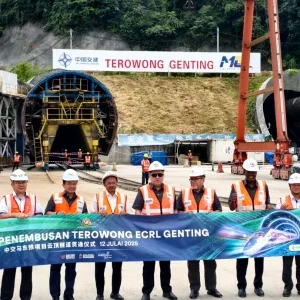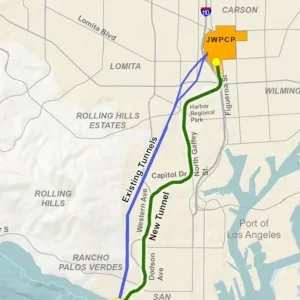Dubai in the United Arab Emirates is soon to construct a US$3.9bn urban light rail network that includes 18km of tunnels.
A consortium of French consultant Systra and engineering companies Dar al Handasah, RSM Salustro-Reydel, AREP and Systra subsidiary MVA, were awarded a design and engineering contract for the light rail system, which includes producing tender documents for the client. The initial proposal for the network has been approved and tendering is expected to get underway soon.
The preliminary design for the scheme’s tunnels includes a single bore, twin track tunnel of approximately 9.6m diameter, at a depth of 25-30m; although a spokesman for the client, Dubai Municipality, told T&TI that the final design was up to contractors and designers.
Ground conditions in Dubai are characterised by sand, with a high water table that would indicate a TBM solution, although the stations are planned as cut and cover excavations. The single bore option has been used for feasibilities and estimating the US$3.9bn capital cost for the whole scheme. However, Dubai Municipality will make no impositions, apart from performance and quality, said the spokesman.
Presently, a prequalification process is underway and much interest has been received from the tunnelling industry, with contractors visiting the client for initial discussions in recent weeks. The project could be financed by the municipality directly or by a concession to build and operate. T&TI was told that this is still to be finalised, but a source added that a turnkey concession was likely and that the client was looking to accelerate the bid process. It is hoped that the tender process can be completed by 2005 with construction commencing in 2006. The current plan is for elements of the scheme to be open by 2010.
The network will consist of two lines, operating a reduced coverage, with distinct staged extensions over the following three years. The 50km Red Line will run broadly parallel to the seafront and will be progressively extended to Jebel Ali Port in the south and Al Qiyadah road intersection in the north. At 20km, the Green Line follows a loop through the central areas and will serve airport terminals one and three. It will be extended progressively to eventually provide a link to shopping centres.
In total, the system will have 55 stations built at intervals of between 1km-3km. At Union Square and Burjuman, the stations will be common to both lines allowing direct transfer. Trains will be fully automated and include first class accommodation as well as sections for women and children only.
The decision to take the trains underground through the central area of Dubai has been made almost purely to preserve the city’s aesthetics. Elsewhere, trains will run on elevated tracks to the boundary of the Emirate.
Qassim Sultan, director general of Dubai Municipality and chairman of the Higher Committee for the Dubai Rail Project, told local press that the benefits arising from the project were immense; citing environmental, transport and safety returns as the key factors.
Related Files
Map showing proposed route of the light rail network in Dubai







